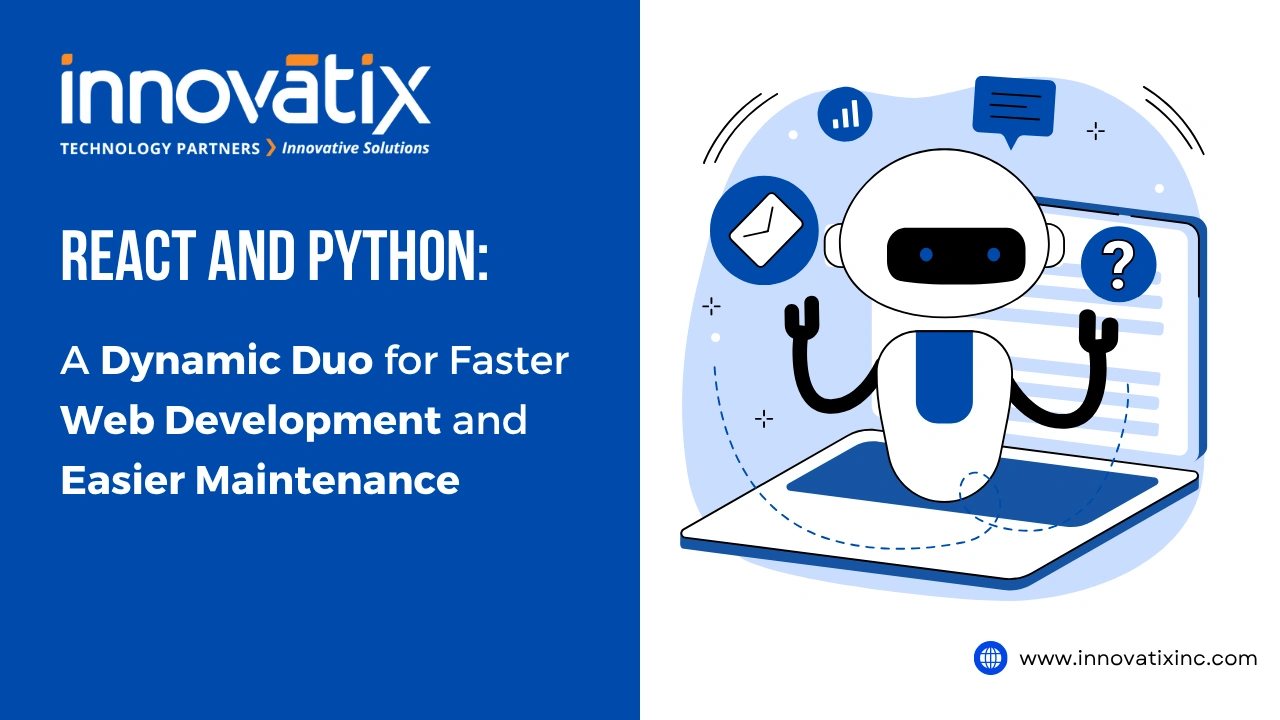React and Python: A Dynamic Duo for Faster Web Development
Building web applications that are efficient, scalable, and easy to maintain is crucial for businesses to stay competitive. Web developers often find themselves looking for the best stack of technologies to streamline their workflow and reduce time to market, while maintaining the flexibility to iterate and adapt to changing user needs. This is where the combination of React and Python comes into play. By leveraging React on the frontend and Python on the backend, developers can create high-performance, scalable, and maintainable web applications with fewer complexities. These two technologies complement each other well, enhancing development speed and long-term maintainability while providing a smooth user experience. In this blog, we will dive deep into the advantages of using React and Python together, and explore how this powerful combination can accelerate web development and simplify maintenance. Why Choose React for the Frontend? React, a JavaScript library maintained by Facebook, has become a cornerstone of modern frontend development due to its flexibility and efficiency. Its primary purpose is to build dynamic, interactive user interfaces, and its popularity is a testament to its success in achieving that goal. Here are some of the key reasons why React has become the go-to choice for many developers: 1. Component-Based Architecture React promotes a component-based architecture, which is a game changer for web development. Instead of writing long blocks of code, React encourages developers to break down the UI into small, reusable components. These components are self-contained modules responsible for rendering a specific part of the interface. This structure makes it easier to build complex UIs without duplicating code, improving both maintainability and scalability. As the application grows, developers can manage updates and enhancements with greater ease. 2. Virtual DOM for Enhanced Performance One of the most critical aspects of React’s efficiency is its virtual DOM (Document Object Model). Unlike traditional DOM manipulation, where every update requires re-rendering the entire page, React’s virtual DOM makes updates only to the components that have changed. This minimizes the amount of work the browser has to do, resulting in faster rendering and improved overall performance. This is especially beneficial for large, data-heavy applications that need to respond quickly to user interactions. 3. JSX for Cleaner Code React introduces JSX (JavaScript XML), which allows developers to write HTML-like syntax directly within JavaScript. This combination of HTML and JavaScript in a single file improves code readability and maintainability, as developers can see both the structure of the UI and the logic that drives it in one place. JSX simplifies the learning curve and accelerates development, making it easier to troubleshoot and implement changes. 4. Strong Ecosystem and Community Support React benefits from a large and active ecosystem, offering a wealth of libraries, tools, and third-party extensions that integrate seamlessly into development workflows. Whether you need state management tools like Redux or styling libraries like Styled Components, React’s ecosystem has you covered. Moreover, the vibrant community behind React ensures that you have access to extensive documentation, tutorials, and support, making it easier to overcome any challenges during development. Python as a Versatile Backend Language Python has long been praised for its simplicity, readability, and versatility. These qualities make it a top choice for backend development, especially for developers who are building scalable and maintainable web applications. Here’s why Python stands out as a backend technology: 1. Readability and Maintainability Python’s clean and intuitive syntax allows developers to focus on solving problems rather than getting bogged down in the intricacies of the language itself. This simplicity translates to faster development times, as well as easier debugging and code maintenance. Python emphasizes readability, making it easier for teams to collaborate on projects and manage complex codebases over time. 2. Rich Ecosystem of Frameworks and Libraries Python has a vast array of frameworks and libraries that make it a highly versatile language for web development. Two of the most popular frameworks are Django and Flask: Beyond these frameworks, Python offers an array of libraries for handling tasks such as database management (SQLAlchemy), API development, machine learning, data analysis, and more. 3. Scalability for Large Applications Contrary to the perception that Python is best suited for small projects, it is, in fact, highly scalable. Large companies like Google, Instagram, and Spotify have used Python to build and scale their web services to millions of users. Python’s performance can be enhanced with optimization techniques and the use of asynchronous programming, which makes it more than capable of handling high traffic and large-scale workloads. 4. Strong Community Support Python’s popularity over the years has led to the development of a large and supportive community. With countless tutorials, guides, and forums available online, developers can easily find solutions to problems, learn new techniques, and adopt best practices. Additionally, Python’s open-source nature ensures continuous improvement and the availability of new tools and features. The Synergy Between React and Python While React and Python excel individually, combining these two technologies unlocks even greater potential. Here’s how React and Python work together to enhance web development: 1. Faster Development Cycles One of the primary advantages of using React and Python together is the ability to accelerate development cycles. React’s component-based architecture allows frontend developers to build reusable UI elements quickly, while Python’s rapid development frameworks, like Django and Flask, enable backend developers to construct robust server-side applications. The combination of these two leads to a faster time-to-market, which is crucial in today’s competitive business environment. 2. Efficient Rendering and Performance React’s virtual DOM, combined with Python’s ability to handle complex data operations, ensures that applications built with this duo are both fast and efficient. React manages the UI rendering efficiently, while Python’s backend handles heavy lifting like data processing, API integrations, and business logic. This balance results in more responsive and performant web applications. 3. Simplified Maintenance Both React and Python emphasize maintainability in their design. React’s modular architecture allows developers to make isolated changes to individual components without disrupting the entire codebase. Similarly, Python’s emphasis on readability and clean code structures






